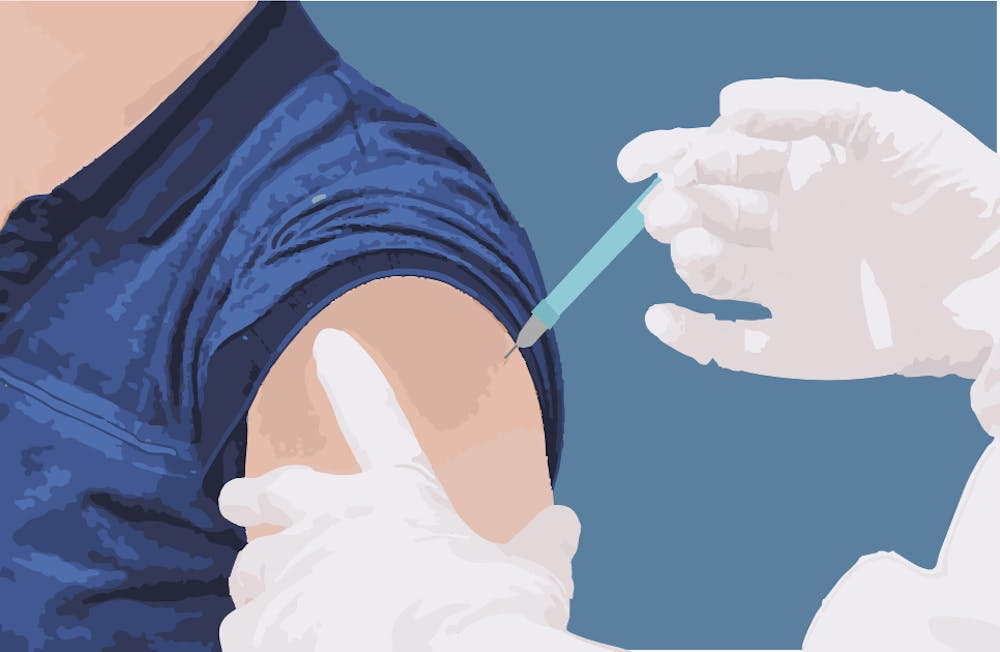Lea en español
The Centers for Disease Control and Prevention previously endorsed the Food and Drug Administration’s approval of a COVID-19 booster vaccine protocol that, for the first time, included an option to mix the three vaccines.
With the advent of the new Omicron variant prompting public health experts to call for COVID-19 vaccine boosters for all, the Centers for Disease Control and Prevention announced Nov. 29 that everyone ages 18 and older should get a booster shot.
Mixing vaccines means receiving an additional vaccine dose from a different manufacturer, while matching vaccines means receiving an additional dose of the same manufacturer’s vaccines.
All Americans over 18 are now eligible for mix-or-match boosters. Those who received their first two Pfizer/BioNTech can mix vaccines by receiving a third booster dose from either Moderna or Johnson & Johnson, or can match vaccines by receiving a third Pfizer dose at least six months after their first two doses, according to the CDC. The same is true for Moderna. Those who received a Johnson & Johnson dose can receive a second dose from any of the three manufacturers at least two months after their first dose.
Booster protocols differ from the CDC recommendation that moderately to severely immunocompromised individuals receive an additional dose at least 28 days after their second. Immunocompromised individuals are at high risk for COVID-19 and do not have as strong of an immune response to COVID-19 vaccines.
Graduate student Gabrielle Hunt researched boosters before deciding to proceed with an additional vaccination. Given her role actively seeing patients as a clinical psychology student, Hunt explained that her decision to receive a booster dose stemmed from acknowledging the waning immunity — the loss of protective antibodies over time — particularly given the nature of her work.
“For me, it’s always what I can do to be as little of a burden on the medical system,” Hunt said. “It's really making things personal for yourself, just thinking about all the different people you interact with day to day and who they might be interacting with.”
Hunt said she relied on reading scientific research and input from trusted advisors who also stay up to date on the research.
Dr. William Petri, chief of the Division of Infectious Diseases and International Health at the University School of Medicine, explains the science underlying booster vaccines.
Petri explained that SARS-CoV-2, the virus that causes the disease COVID-19, is a coronavirus- a group of viruses named for their crown-like spike glycoproteins - which binds to cells’ ACE2 and allows the virus to enter the cell and replicate itself, disrupting the body’s immune response.
Dr. Petri referenced the 2002-03 SARS epidemic, noting that, “20 years ago, we learned that the virus undergoes a conformational change [or change in shape] after binding to ACE2 receptors that make it ineffective in generating neutralizing antibodies against the virus.”
Given this history, all three FDA-approved vaccines were developed to prevent the virus from changing shape once it binds using the same gene sequence. Still, research on vaccine effectiveness continues to evolve. Studies show that the Johnson & Johnson vaccine does not provide as high a level of neutralizing antibodies as Pfizer or Moderna. However, a second Johnson & Johnson dose is nearly as effective as the 2-shot mRNA vaccines, Petri said.
Studies have also shown that individuals need a stronger immunity to effectively respond to the Delta variant and other new mutations of the virus, such as the Omicron variant, which was recently classified by the World Health Organization as a variant of concern. However, the World Health Organization announced that current vaccines are still effective against the Omicron variant.
Greater protection against the virus provided by boosters means a lower risk of breakthrough infections and a lower risk of long haul symptoms such as loss of taste and smell, Petri said. As such, expanding immunization and booster rates means reducing transmission and a sooner return to normal life.
Additionally, studies conducted by the National Institute of Health demonstrated that every mix-and-match combination of a booster on top of a primary immunization results in about a twenty-fold increase in neutralizing antibody levels.
“There is really no way to go wrong ... with your choice of boosters,” Petri said. “Any combination of the [three FDA-approved] boosters are effective in generating a 20-fold increase in neutralizing antibodies [or immunity].”
In choosing from among the various mix-and-match options, Petri said that it is important to consider that different people will have different reactions. For example, the very small risk of myocarditis associated with Pfizer is greatest among young men, so they might consider choosing a different vaccine. However, the very low risk of clotting associated with Johnson & Johnson is highest among reproductive-age women, so they may consider a different vaccine.
“[There will be some] personalization based on known risks and individual side effects,” Petri said.
Moving forward, Petri said it is too early to know whether additional booster doses will be required.
“There is ongoing research on different types of vaccines, such as Delta-specific COVID-19 vaccines,” Petri said.
For now, Petri said continued transmission of COVID-19 will only increase the likelihood for virus mutation, highlighting the importance of getting vaccinated and receiving a booster dose..
For Hunt, the importance of the booster shot is paramount over any potential downsides.
“The [side effects of the vaccine] are only temporary … it’s low-risk, high reward,” Hunt said. “It's really important to protect yourself as much as possible.”







